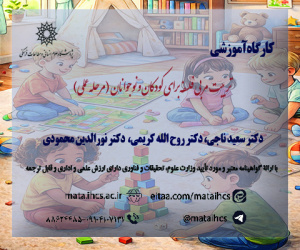Counterterrorism in Middle Eastern Foreign Policy of Iran (1971-2021) (مقاله علمی وزارت علوم)
درجه علمی: نشریه علمی (وزارت علوم)
آرشیو
چکیده
In the last half-century, Iran has emerged as a regional power in the Middle East. One of the indicators of a country's regional power is regional custodianship that includes fighting intra-regional threats, such as terrorism. The aim of the current paper is to study Iranian Foreign Policy approach on fighting terrorism. Confronting terrorist groups in the Middle East has been one of the major aspects of Iran's foreign policy under two different political regimes. The Iranian government's struggle with the Dhofar Liberation Front (DLF) in Oman during the Pahlavi era and the fight against the Taliban terrorist group in Afghanistan and ISIS in Iraq and Syria can be seen as examples of this inter-regional struggle after Islamic revolution. Using David Rapoport (2004) and Robert Stewart's theory (2012), the paper seeks to investigate Iran’s foreign policy stance on fighting terrorism in West Asia. The main question of this article is How have the waves of international terrorism, effected Iran's regional foreign policy in the Middle East over the past half century? The findings show that Iran's foreign policy has been countered by the waves of international terrorism and has protected the security of the Middle East against terrorist groups and shows how a strong Iran has always reduced the cost of major powers in the fight against terrorism.Counterterrorism in Middle Eastern Foreign Policy of Iran (1971-2021)
In the last half-century, Iran has emerged as a regional power in the Middle East. One of the indicators of a country's regional power is regional custodianship that includes fighting intra-regional threats, such as terrorism. The aim of the current paper is to study Iranian Foreign Policy approach on fighting terrorism. Confronting terrorist groups in the Middle East has been one of the major aspects of Iran's foreign policy under two different political regimes. The Iranian government's struggle with the Dhofar Liberation Front (DLF) in Oman during the Pahlavi era and the fight against the Taliban terrorist group in Afghanistan and ISIS in Iraq and Syria can be seen as examples of this inter-regional struggle after Islamic revolution. Using David Rapoport (2004) and Robert Stewart's theory (2012), the paper seeks to investigate Iran’s foreign policy stance on fighting terrorism in West Asia. The main question of this article is How have the waves of international terrorism, effected Iran's regional foreign policy in the Middle East over the past half century? The findings show that Iran's foreign policy has been countered by the waves of international terrorism and has protected the security of the Middle East against terrorist groups and shows how a strong Iran has always reduced the cost of major powers in the fight against terrorism.









